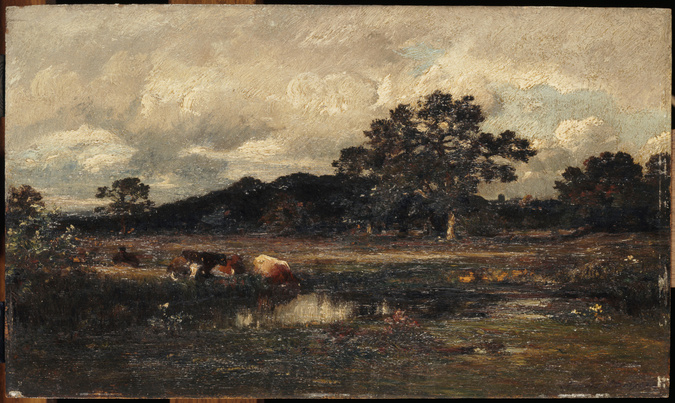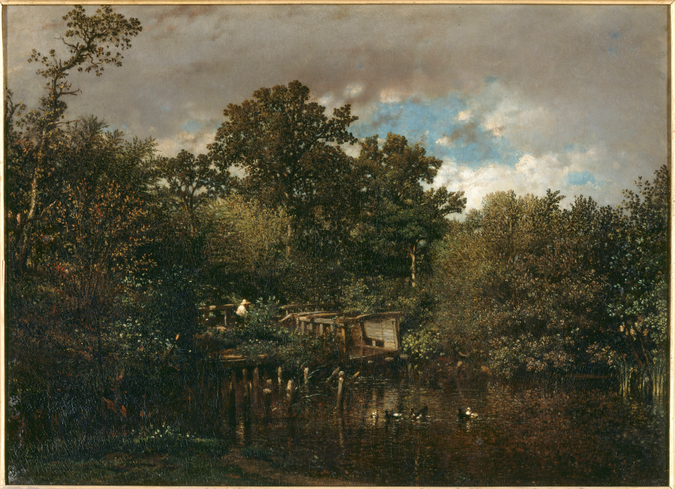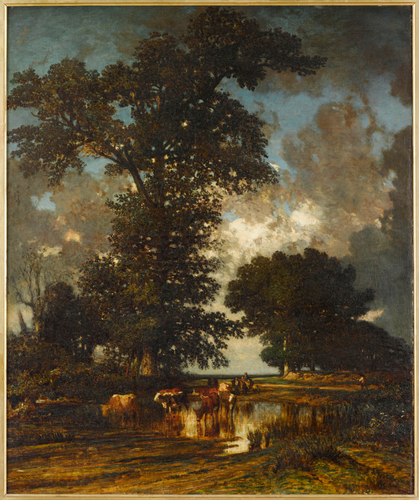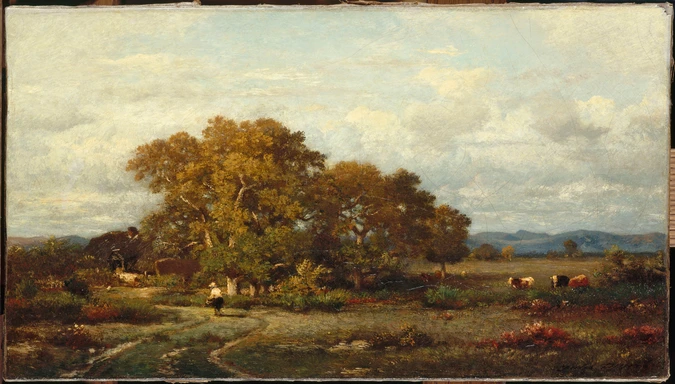Le Chêne
For many years Jules Dupré shared the experiences of the painters of the Forest of Fontainebleau. He was Théodore Rousseau's closest friend, before a quarrel divided them.
This painting reveals the common sensitivity of the two men: a certain fascination with trees, this powerful life form that bursts out of the ground. Both were intent on rendering it in the minutest detail, on drawing up an anatomy. The tree, for these painters, was a motif in its own right, a motif to be expressed through an infinite interplay of substance, colour, light and shade. It was a landscape in itself.
Here the visible structure of the oak tree, painted with rough brushwork, reveals this liking for morphological analysis. It is as if the trunk, the disposition of the branches and every leaf have been studied, observed and analysed with the meticulousness of a naturalist in order to extract its specific personality and poetry. Jules Dupré was, according to Jules Claretie, "the poet [...] of rustic courtyards, of winding roads, of ponds where cattle come wandering across the fields to drink, of sun-drenched pastures" and the poet of trees "pushing up their twisted trunks".








